
Imperial Crypt: Resting Place of the Habsburgs
Explore the Imperial Crypt in Vienna, the final resting place of Habsburg emperors and empresses, and discover centuries of Austrian history.
The Imperial Crypt, also known as the Capuchin Crypt, is located beneath the Capuchin Church in Vienna. Since 1633, it has served as the main burial site for members of the Habsburg dynasty, housing the remains of emperors, empresses, and other royals.
A brief summary to Imperial Crypt
- Tegetthoffstraße 2, Vienna, Innere Stadt, 1010, AT
- +431512685388
- Visit website
Local tips
- Consider visiting during the week to avoid larger crowds.
- Check out the contrast between the elaborate sarcophagi of Maria Theresa and the plain design of her son Joseph II.
- If you are interested in a more in-depth tour, English-language guided tours are available on Wednesdays through Saturdays at 3:30 pm for an additional fee.
Getting There
-
Public Transport
The Imperial Crypt is easily accessible via Vienna's public transport system. From Stephansplatz station (U1 and U3 lines), walk south along Kärntner Straße, then turn left onto Tegetthoffstraße. The crypt entrance will be on your left. Alternatively, take bus line 2A to the Plankengasse stop, which is a very short walk to Tegetthoffstraße. A single ride on Vienna's public transport costs approximately €2.40.
-
Walking
Located in the heart of Vienna's Innere Stadt, the Imperial Crypt is within easy walking distance of many major attractions. From St. Stephen's Cathedral, walk south on Kärntner Straße for about 5 minutes, then turn left onto Tegetthoffstraße. The entrance to the crypt will be on your left. From the Hofburg Palace, exit towards Burggarten and walk towards Tegetthoffstraße. The walk is generally flat and pedestrian-friendly.
-
Taxi/Ride-Share
Taxis and ride-sharing services are readily available throughout Vienna. A short ride from a central location like the Vienna State Opera to the Imperial Crypt will typically cost between €8 and €12, depending on traffic and the specific service used. Be sure to confirm the fare or estimated cost before beginning your journey.
-
Parking
Parking in the immediate vicinity of the Imperial Crypt is limited and can be expensive. The closest parking garage is Tiefgarage Kärntnerring. Expect to pay around €6-8 per hour, or approximately €30 for a full day. Given the central location and excellent public transport options, driving directly to the crypt is not recommended. Consider parking further outside the city center and taking public transport for a more cost-effective and convenient approach.
Discover more about Imperial Crypt
Iconic landmarks you can’t miss
Palais Grundemann Esterházy (Grundemann von Falckhenberg)
0.2 km
Discover the elegance of Palais Grundemann Esterházy, a historic landmark in Vienna that showcases stunning Baroque architecture and rich cultural heritage.
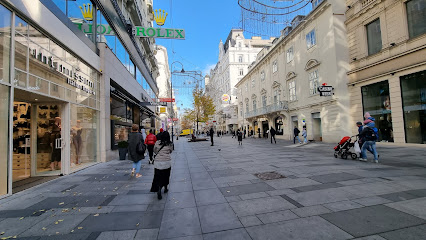
Albertinapl. 1
0.2 km
Explore masterpieces from Dürer to Picasso in a stunning Habsburg palace, home to one of the world's largest graphic art collections, right in the heart of Vienna.

Dorotheergasse 7
0.2 km
Explore the enchanting Dorotheergasse 7 in Vienna, a stunning architectural landmark that captures the city's rich cultural heritage.

Michaelertrakt
0.3 km
Discover the Michaelertrakt, Vienna's imperial gateway, offering access to the Hofburg's treasures and a glimpse into the grandeur of the Habsburg dynasty on Michaelerplatz.

House of Music
0.3 km
Experience the captivating world of music at Vienna's House of Music, where sound meets innovation in an interactive museum setting.

Haas-Haus
0.3 km
A postmodern architectural statement in Vienna's heart, the Haas-Haus reflects history and modernity, offering shops, dining, and panoramic city views on Stephansplatz.

Habsburgergasse 3
0.3 km
Discover the architectural beauty of Habsburgergasse 3 in Vienna, where history and artistry converge in a breathtaking urban landscape.

Time Travel Vienna
0.3 km
Experience 2000 years of Vienna's history brought to life through 5D cinema, animatronics, and virtual reality in the heart of the city, offering an engaging adventure for all ages.

Deutschordenskirche
0.3 km
Explore the serene beauty of Deutschordenskirche, a hidden gem in Vienna's heart, blending exquisite architecture with rich spiritual heritage.

Graben
0.3 km
Experience Vienna's elegance on the Graben, a historic street blending luxury shopping with stunning architecture and a vibrant atmosphere in the heart of the city's Innere Stadt.

Franziskanerpl.
0.3 km
Experience the charm and culture of Vienna at Franziskanerplatz, a vibrant square in the heart of the city filled with history and local delights.

Column of Pest
0.3 km
Explore the Column of Pest, a stunning Baroque monument in Vienna commemorating the city's triumph over the Great Plague, surrounded by vibrant culture.

Schweizerhof Hofburg Wien
0.3 km
Discover the elegance and rich history of the Schweizerhof Hofburg in Vienna, a stunning landmark showcasing the opulence of the Habsburg dynasty.
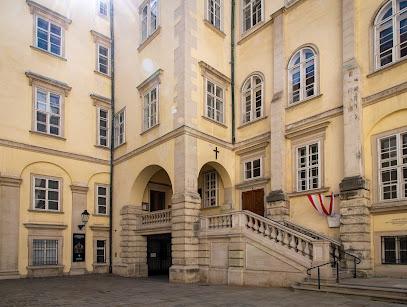
Swiss court, Hofburg Vienna
0.3 km
Discover the breathtaking Swiss Court at Hofburg Vienna, where history, architecture, and royal charm intertwine in a stunning landmark.

Hercules and the Nemean lion fountain
0.3 km
Discover the mythological allure of the Hercules and the Nemean Lion Fountain in Vienna's Burggarten, a serene escape blending classical art with imperial history and natural beauty.

Unmissable attractions to see
Capuchin Church, llc
0.0 km
Explore the Capuchin Church in Vienna, a breathtaking Baroque masterpiece and the final resting place of the Habsburgs, steeped in history and artistry.

Kapuzinerkloster
0.0 km
Explore the serene beauty and rich history of Kapuzinerkloster, a must-see monastery in the heart of Vienna, Austria.

Concerts Capuchin Church
0.0 km
Experience the enchanting concerts of Capuchin Church, a historic venue in the heart of Vienna, where music and spirituality beautifully intertwine.

Neuer Markt
0.1 km
Experience the vibrant culture and stunning architecture of Neuer Markt, Vienna's historical square in the heart of the city.

Donnerbrunnen
0.1 km
Experience the beauty and history of the Donnerbrunnen, a stunning baroque fountain in Vienna's vibrant Neuer Markt.

Gallery at the Albertina - Zetter GmbH
0.1 km
Explore the Albertina Gallery in Vienna, home to a stunning art collection and exquisite exhibitions, perfect for art lovers and cultural enthusiasts.

Theatermuseum
0.1 km
Explore the rich history of theater at Vienna's Theatermuseum, where culture and performance come alive in a captivating setting.

Palais Lobkowitz
0.1 km
Explore Palais Lobkowitz, Vienna's historical gem, showcasing Baroque architecture, rich heritage, and cultural significance in the heart of the city.
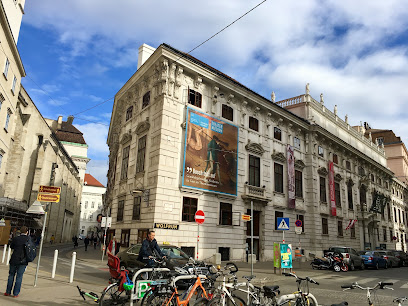
Maltese Church, Vienna
0.1 km
Discover the serene beauty of the Maltese Church in Vienna, a stunning Baroque architectural gem and spiritual haven for visitors.

Helmut-Zilk-Platz
0.1 km
Experience the charm of Helmut-Zilk-Platz, a historical landmark in Vienna that blends stunning architecture with vibrant public life.

K.u.K. Café-Konditorei L. Heiner.
0.1 km
Discover the timeless elegance and rich flavors of Vienna at K.u.K. Café-Konditorei L. Heiner, where tradition meets taste.

Prime Tours
0.1 km
Discover Vienna's rich history and culture with Prime Tours, your expert guide to the city's must-see attractions and hidden gems.

MYTHOS MOZART
0.1 km
Explore contemporary creativity at Mythos Mozart, a modern art museum in Vienna that showcases innovative artworks and dynamic exhibitions.
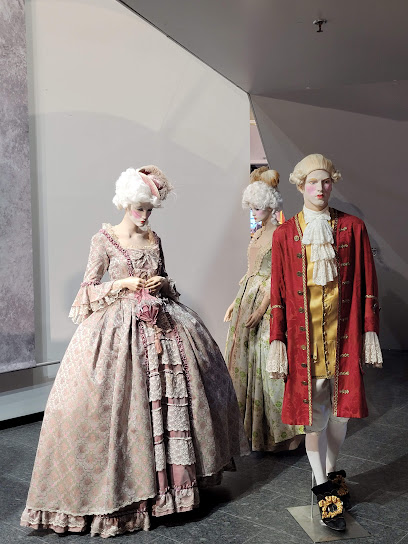
Monument Against War and Fascism
0.1 km
Explore Vienna's Monument Against War and Fascism, a powerful reminder of peace amidst the city's rich cultural heritage.

Café Mozart
0.2 km
Experience the charm of Vienna at Café Mozart, where exquisite pastries and rich coffee culture meet in a historic setting.

Essential places to dine
Restaurant Führich
0.1 km
Experience the best of Austrian cuisine with a touch of elegance at Restaurant Führich, where every meal is a celebration of flavor.

DO & CO Albertina
0.2 km
Experience fine dining at DO & CO Albertina - where exquisite cuisine meets stunning views in the heart of Vienna.

Restaurant Rote Bar
0.2 km
Experience the epitome of Austrian fine dining at Restaurant Rote Bar, where tradition meets sophistication in every exquisite dish.

Restaurant Grüne Bar
0.2 km
Experience fine dining at Restaurant Grüne Bar in Vienna – where exquisite Austrian cuisine meets elegant ambiance.

Zum weißen Rauchfangkehrer
0.2 km
Indulge in authentic Austrian cuisine at Zum weißen Rauchfangkehrer, where tradition meets exquisite flavor in the heart of Vienna.

Brasserie Palmenhaus Wien
0.3 km
Experience fine dining amidst lush greenery at Brasserie Palmenhaus Wien - where elegance meets nature in the heart of Vienna.

Restaurant Der Kuckuck
0.3 km
Experience authentic Austrian cuisine at Restaurant Der Kuckuck in Vienna – where tradition meets taste in a halal-friendly setting.

Ristorante Settimo Cielo (im Hotel Royal)
0.3 km
Experience culinary excellence at Ristorante Settimo Cielo in Vienna – where authentic Italian flavors meet breathtaking city views.
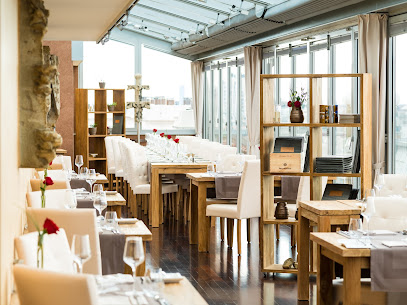
DO & CO Restaurant Stephansplatz
0.3 km
Discover culinary excellence and stunning views at DO & CO Restaurant Stephansplatz in Vienna's vibrant city center.
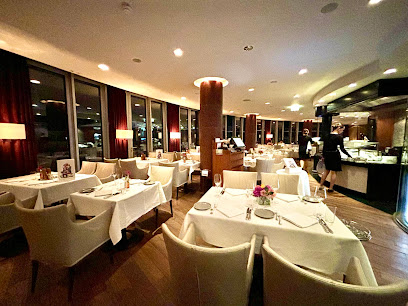
TIAN
0.3 km
Discover TIAN: Vienna's premier vegetarian restaurant offering innovative dishes made from locally sourced ingredients in an elegant setting.
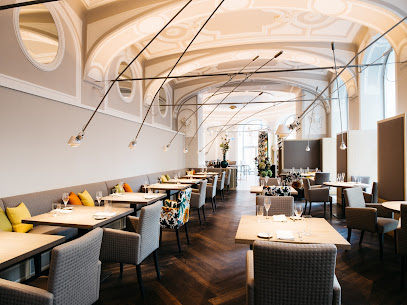
Ribs of Vienna
0.4 km
Experience the taste of Austria at Ribs of Vienna - where tradition meets flavor in a cozy setting.

Patara Restaurant Vienna GmbH
0.4 km
Discover the essence of Thai cuisine at Patara Restaurant in Vienna - where traditional flavors meet modern elegance.

Restaurant Wienerin - 1010 Wien
0.4 km
Discover the flavors of Austria at Restaurant Wienerin - where tradition meets modernity in the heart of Vienna.

WEIN & CO Wien Stephansplatz – Weinrestaurant & Flagshipstore
0.4 km
Discover fine wines and exquisite cuisine at WEIN & CO Wien Stephansplatz – Vienna's premier destination for wine enthusiasts.

Restaurant Chamäleon
0.4 km
Discover authentic Swiss flavors at Restaurant Chamäleon in Vienna's Innere Stadt - a culinary haven for food lovers.

Markets, malls and hidden boutiques
La Cure Gourmande Vienna
0.0 km
Experience the sweetness of Vienna at La Cure Gourmande, where gourmet chocolates and delightful souvenirs await every tourist.

Swarovski
0.1 km
Discover the enchanting world of Swarovski in Vienna, where exquisite crystals and elegant designs intertwine, creating a truly unique shopping experience.

Wolford Boutique Wien
0.1 km
Explore Wolford Boutique Wien for an unparalleled shopping experience in luxury lingerie and women's fashion, set in the heart of Vienna's vibrant shopping district.

Oh Vienna Souvenir Shop
0.1 km
Discover unique keepsakes and authentic Viennese gifts at Oh Vienna Souvenir Shop, where every item celebrates the charm of the city.

Souvenirs Vienna
0.1 km
Discover the charm of Vienna through unique souvenirs that capture the city's spirit and artistry, perfect for reminiscing about your unforgettable journey.

Planet Vienna
0.1 km
Explore Planet Vienna, the ultimate souvenir store for authentic Viennese crafts and gifts that capture the spirit of Austria.

Steffl
0.1 km
Discover the elegance of Vienna at Steffl, where luxury meets local charm in a premier shopping experience.

Austria Corner Amadeus
0.1 km
Explore Austria Corner Amadeus, a charming gift shop in Vienna, offering authentic souvenirs and unique treasures that celebrate Austrian culture.
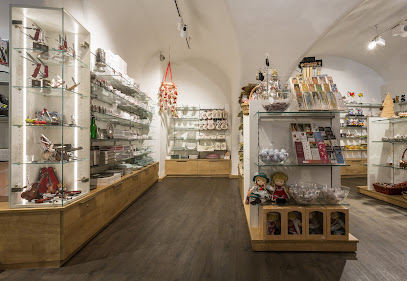
THE WORLD TO GO VIENNA
0.2 km
Explore The World To Go Vienna for unique souvenirs and gifts that reflect the rich culture and artistry of the city, perfect for every traveler.

LEANSCHI & friends e.U. | Concept Store(s) & Retail Services
0.2 km
Explore the creative heart of Vienna at LEANSCHI & friends e.U., a concept store offering unique gifts and artisan treasures.
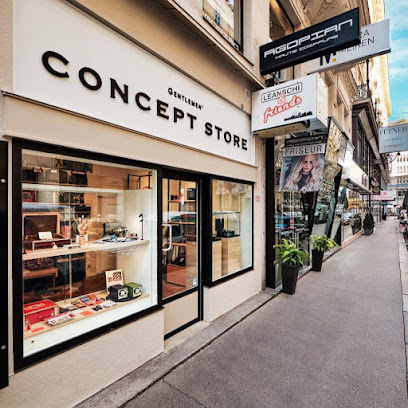
& Other Stories
0.2 km
Explore & Other Stories in Vienna, where chic women's fashion meets exceptional service. Discover unique styles and accessories in a stylish boutique.

STEIFF in WIEN
0.3 km
Experience the enchanting world of STEIFF in Vienna, where premium plush toys and nostalgia come together for a unique shopping adventure.
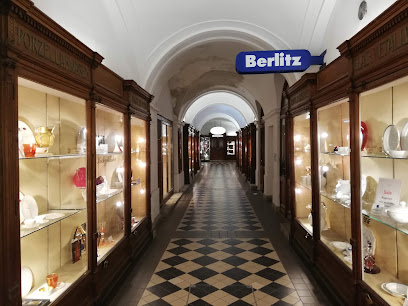
DIE VERMISCHTE WARENHANDLUNG
0.3 km
Explore Vienna's hidden gem for unique gifts and local crafts at Die Vermischte Warenhandlung, a charming shop in the heart of the city.

A&K Geschenke und Souvenir KG
0.4 km
Explore A&K Geschenke und Souvenir KG in Vienna for authentic souvenirs and unique keepsakes that embody the city’s rich artistic heritage.

HAMTIL & SÖHNE Concept Store Vienna
0.4 km
Discover unique gifts and local craftsmanship at HAMTIL & SÖHNE Concept Store in Vienna's vibrant Innere Stadt.
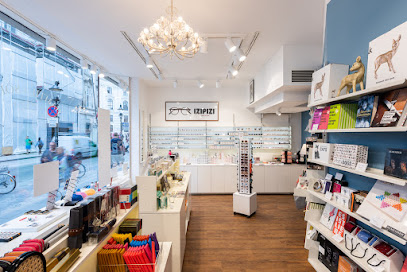
Essential bars & hidden hideouts
Nightflys American Bar
0.2 km
Discover the lively Nightflys American Bar in Vienna, where American flair meets a vibrant nightlife experience, perfect for unwinding after a day of exploring.

Loos American Bar
0.2 km
Experience the charm of Vienna at Loos American Bar, where exquisite cocktails and elegant Art Deco ambiance create unforgettable memories.

Blaue Bar
0.2 km
Immerse yourself in Vienna's nightlife at Blaue Bar, where elegance meets exceptional cocktail craftsmanship.

New York Bar and Music
0.2 km
Discover the lively atmosphere and live music at New York Bar and Music, a perfect destination for cocktail lovers and music enthusiasts in Vienna.

Kruger’s American Bar
0.2 km
Discover the vibrant ambiance and expertly crafted cocktails at Kruger’s American Bar, a must-visit destination for nightlife in Vienna.

Stadtbar
0.2 km
Experience Vienna's vibrant atmosphere at Stadtbar, a cozy bar offering a delightful selection of drinks and local snacks in the heart of the city.

Eden Bar
0.3 km
Discover the heart of Vienna's nightlife at Eden Bar, where live music meets a vibrant atmosphere for an unforgettable evening.

Bar 13 Cocktails
0.3 km
Experience the vibrant nightlife of Vienna at Bar 13, where expertly crafted cocktails and a lively atmosphere await you.

Kleinod
0.3 km
Discover the vibrant cocktail culture in Vienna at Kleinod, where expertly crafted drinks and stylish ambiance create an unforgettable nightlife experience.

Bristol Bar
0.3 km
Experience the luxurious charm of Bristol Bar in Vienna, where exquisite cocktails meet authentic Austrian cuisine in an elegant setting.

1516 Brewing Company
0.3 km
Discover Vienna's vibrant beer culture at 1516 Brewing Company, where craft beer meets delicious cuisine in a lively brewpub atmosphere.

Flanagans
0.4 km
Experience authentic Irish hospitality and delicious gastropub fare at Flanagans in Vienna, where culture and cuisine meet in a vibrant atmosphere.

Bockshorn Irish Pub
0.5 km
Discover the warmth of Irish hospitality at Bockshorn Irish Pub in Vienna, where great brews and lively ambiance await.

Roberto American Bar
0.5 km
Experience the vibrant nightlife of Vienna at Roberto American Bar, renowned for its exquisite cocktails and lively atmosphere.

First American Bar
0.5 km
Discover the lively heart of Vienna at First American Bar, where exceptional cocktails and vibrant atmosphere create unforgettable nights.




